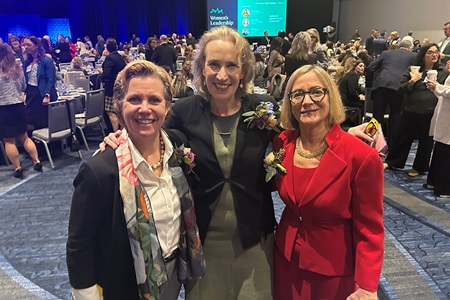After the Fire, a Joslin Medalist’s Resilience Remains
When Gail Geyer Lost Everything in the L.A. Fires, a Replacement Medal Helped Restore What Mattered
When the wildfires destroyed Gail Geyer’s Pacific Palisades home this January, it reduced everything she owned to ash. For 27 years, she and her husband had lived at the end of a quiet street backed by the Santa Monica Mountains—a beautiful but vulnerable setting. They’d always known it might burn someday.
That day came on January 7th, when a series of fast-moving wildfires swept across Los Angeles County, killing at least 30 people and forcing more than 200,000 residents to evacuate. By month’s end, the flames had scorched 57,000 acres and destroyed more than 18,000 homes and structures. Gail and her husband’s home was among them.
As a risk manager for a hospital system, Gail is no stranger to emergency planning. When her husband called midmorning to say the smoke was rising fast and he was evacuating, she gave him two instructions: grab her passport and her medications. In the chaos, he forgot one critical item—her insulin.
It could have spelled disaster. But Gail, 69, has lived with type 1 diabetes since she was 12. She had a backup insulin stash in her car.
That evening, the couple watched from her husband’s 13th-floor office in Santa Monica as flames engulfed their neighborhood.
“We could see our neighborhood in flames,” she wrote later.
Five days passed before they were allowed back. What they found was cinders. Their house was gone.
“It was unsettling to find that all my possessions were gone,” Gail later wrote. “But I felt thankful that my possessions didn’t really matter that much to me. I am fortunate that unlike so many others, I have a place to live.”
Her calm may seem improbable. But for Gail, it tracks. She’s spent a lifetime managing the daily uncertainty of her Type 1 diabetes. It demands constant vigilance, or the consequences can be swift.
Gail was diagnosed in the late 1960s, when blood sugar couldn’t be tested at home and insulin came in long-acting forms that peaked unpredictably. “I was embarrassed and ashamed,” she recalled. “I hardly told anyone.”
But Gail adapted. By 1985, she’d started using an insulin pump. Today, she wears a continuous glucose monitor (CGM) that syncs with her phone and lets her dose insulin with a tap. She’s no longer quiet about her condition. Gail is part of a support group, mentors others with Type 1, and embraces any opportunity to speak honestly about what it takes to manage her chronic condition.
She’s met the daily challenges for more than five decades, while raising a family, building a career, and pushing through the subtler burdens: stigma, misunderstanding, judgment.
So yes, when the fire took her home, Gail remained unflappable. But among the lost photographs and keepsakes, one other material possession tugged at her more than she might have expected: a medal from Joslin Diabetes Center, awarded for living 50 years with Type 1.
“That medal made me feel like a warrior,” she said.
The Joslin Medalist Program was created in 1948 by Dr. Elliott P. Joslin to recognize people who had lived with diabetes for 25 years—a remarkable feat at the time. It was meant both as encouragement and reward, grounded in the belief that careful self-management could help patients outlast the odds. The 50-Year Medal was introduced in 1970, followed by the 75-Year Medal in 1996 and the first 80-Year Lifetime Achievement Award in 2013. To date, Joslin’s Medalist Program has awarded more than 5,000 50-Year Medals to recipients across the US and around the world.
Gail doesn’t recall exactly when she remembered the lost medal. But once she did, she reached out to Joslin Diabetes Center. The Medalist Team sent a replacement right away.
It's just a piece of metal, of course. But it means something to Gail. It always did. The Joslin Medal is an enduring symbol that those who live with Type 1 diabetes are indeed true warriors, their spirits unbreakable.



